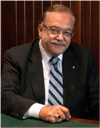
Lupine Publishers Group
Lupine Publishers
Menu
ISSN: 2641-1709
Case Report(ISSN: 2690-5752) 
Tympanoplasty in Scuba Diving Patient Having A Tympanic Membrane Perforation: Case Report, and Description of New Surgical Technique Volume 9 - Issue 5
Mabelle Sfeir* and Bassam Romanos
- Department of Otorhinolaryngology, Eye and Ear Hospital International, Holy Spirit University of Kaslik, Lebanon
Received: February 24, 2023; Published: March 15, 2023
Corresponding author: Mabelle Sfeir, Department of Otorhinolaryngology, Eye and Ear Hospital International, Holy Spirit University of Kaslik, Lebanon
DOI: 10.32474/JAAS.2023.09.000321
Abstract
Tympanic membrane (TM) perforation due to barotrauma is common among scuba diving patients. The closure of the TM by performing tympanoplasty contributes to lessening the infectious risk among these patients. Tympanoplasty is one of the most commonly performed procedures by Otolaryngologists. There are variations of the types of grafts used as well as different techniques.
Keywords: Tympanic membrane perforation; tympanoplasty; scuba diving
Development
A thirty-one-year-old scuba diving patient presented with recurrent tympanic membrane perforations (nearly monthly perforations) due to his diving, which forced him to interrupt his diving for some time regularly. The patient underwent tympanoplasty using a new technique with perichondrium, cartilage, and palissades. He could return to diving 1 month after surgery. At 10 months follow- up, the patient had no more tympanic membrane perforations and is diving without reported problems. This case report is written to describe this new technique of tympanoplasty that can be used in scuba diving patients, so they can be treated successfully and resume their activity faster [1-6].
Case Report
A 31-year-old scuba diving patient presented to the outpatient department with a history of recurrent tympanic membrane perforations that obliged him to stop his diving several times per year throughout the years. Clinical and endoscopic examinations of the nose, oropharynx, and nasopharynx were normal. Otoendoscopy revealed a large central perforation. In this context, a tympanoplasty has to be done. A postaural incision was done, and perichondrium with conchal cartilage and palissade cartilage were prepared. Thorough irrigation of the middle ear with dilute betadine was done. The mobility and integrity of ossicles were tested; they were normal. Perichondrium and conchal cartilage were put in an inlay manner touching the malleus, supported by palissade cartilages et gelfoam (Figure 1). The TM flap was repositioned, and gelfoam pieces were put in. Closure of the wound was done in layers and dressing was applied. One month after the surgery, the patient resumed his diving without the recurrence of his tympanic membrane perforation. At 10 months post-operation follow-up, the tympanic membrane was intact, without further episodes of tympanic membrane perforations.
Discussion
TM perforations contribute to lifestyle limitations and various morbidities. Even though most acute TM perforations heal spontaneously, long-term outcomes are suboptimal [6]. The first tympanoplasty was done by Marcus Banzer in 1640 using a pig’s bladder as a graft [1]. The cartilage tympanoplasty technique was demonstrated by Prof Mirko Tos [2]. Middle ear barotrauma is a common problem that divers encounter, and it can lead in some cases to tympanic membrane perforation [3]. The management of TM perforation in divers consisted of cartilage palissade tympanoplasty, and diving could be resumed 6 months after the surgery [4], or after 3 months as stated by other authors [5]. Surgical management of TM perforation in divers is challenging for most otolaryngologists. Some authors stated that the management of TM perforation in divers consists of the exclusion of barotrauma, short-term intranasal corticosteroid sprays with or without nasal decongestants, and antibiotics if a secondary infection occurs. They stated also that diving should be interrupted until the TM perforations have healed, and that tympanoplasty is required in cases of persistent perforations. Nevertheless, they did not mention the strategy to be adopted in cases of recurrent TM perforations [5].
However, the results of tympanic membrane closure obtained with one-piece composite cartilage-perichondrium graft are similar to those obtained with palissade cartilage grafts (86.3% vs 85% respectively) [7]. The results have been better with the use of full-thickness palissades with a success rate of 90% as compared to temporalis fascia graft (83.3%) [8]. It has also been established that better morphological outcomes are obtained with tympanoplasty using cartilage with or without perichondrium than that using temporalis fascia grafts. Although hearing outcomes were not different between these two types of the graft [9]. In these three previous studies, they did not mention whether the patients were divers or not. As divers are highly motivated to continue their activity, they are not satisfied by recommendations of interrupting it. This report is a helpful material for the surgical treatment with tympanoplasty of recurrent perforations in divers; especially since using the above described technique prevents recurrence, and allows divers to return to their activity within 1 month after the surgery.
Conclusion
Recurrent tympanic membrane perforations in scuba-diving patients present a threat to their lifestyle. The above presented case aims to develop insights into successful surgical management of recurrent TM perforation cases in divers, allowing them to rapidly resume their activity.
Financial or Other Competing Interest
None.
References
- Al Qahtani B, Al Tuwaijri M, Al Tamimi F, Al Majed A, Wasi M, et al. (2015) Tympanometric patterns in patients undergoing cartilage tympanoplasty of 0.6 mm thickness. Indian J Otol 21(4): 233.
- Tos M (2008) Cartilage tympanoplasty methods: proposal of a classification. Otolaryngol—Head Neck Surg Off J Am Acad Otolaryngol-Head Neck Surg 139(6): 747-758.
- Glazer TA, Telian SA (2016) Otologic Hazards Related to Scuba Diving. Sports Health 8(2): 140-144.
- Velepic M, Bonifacic M, Manestar D, Velepic M, Bonifacic D (2001) Cartilage palisade tympanoplasty and diving. Otol Neurotol 22(4): 430-432.
- Nofz L, Porrett J, Yii N, De Alwis N (2020) Diving-related otological injuries: Initial assessment and management. Aust J Gen Pract 49(8): 500-504.
- Kristensen S (1992) Spontaneous healing of traumatic tympanic membrane perforations in man: a century of experience. J Laryngol Otol 106: 1037-1050.
- Larrosa F, de Osso JT, Dura MJ (2020) Palisade cartilage tympanoplasty compared to one-piece composite cartilage-perichondrium grafts for transcanal endoscopic treatment of subtotal tympanic membrane perforations: a retrospective study. Eur Arch Otorhinolaryngol 277: 1955-1959.
- Ashish Vashishth (2014) Clinical advantages of cartilage palisades over temporalis fascia in type I tympanoplasty. Auris Nasus Larynx 41(5): 422-427.
- Mohamad Shwan H (2012) Is Cartilage Tympanoplasty More Effective Than Fascia Tympanoplasty? A Systematic Review, Otology & Neurotology 33(5): 699-705.

Top Editors
-

Mark E Smith
Bio chemistry
University of Texas Medical Branch, USA -

Lawrence A Presley
Department of Criminal Justice
Liberty University, USA -

Thomas W Miller
Department of Psychiatry
University of Kentucky, USA -

Gjumrakch Aliev
Department of Medicine
Gally International Biomedical Research & Consulting LLC, USA -

Christopher Bryant
Department of Urbanisation and Agricultural
Montreal university, USA -

Robert William Frare
Oral & Maxillofacial Pathology
New York University, USA -

Rudolph Modesto Navari
Gastroenterology and Hepatology
University of Alabama, UK -

Andrew Hague
Department of Medicine
Universities of Bradford, UK -

George Gregory Buttigieg
Maltese College of Obstetrics and Gynaecology, Europe -

Chen-Hsiung Yeh
Oncology
Circulogene Theranostics, England -
.png)
Emilio Bucio-Carrillo
Radiation Chemistry
National University of Mexico, USA -
.jpg)
Casey J Grenier
Analytical Chemistry
Wentworth Institute of Technology, USA -
Hany Atalah
Minimally Invasive Surgery
Mercer University school of Medicine, USA -

Abu-Hussein Muhamad
Pediatric Dentistry
University of Athens , Greece

The annual scholar awards from Lupine Publishers honor a selected number Read More...





